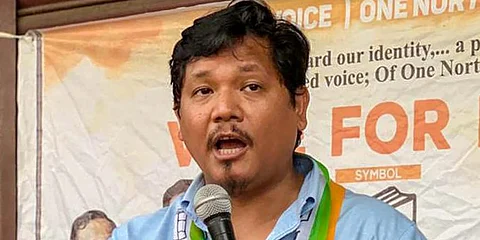

GUWAHATI: Six decades after her death, Meghalaya is planning to install a statue to honour Mavis Dunn Lyngdoh, who became the Indian subcontinent’s first woman minister 83 years ago. As Meghalaya is celebrating the golden jubilee of statehood, Assembly Speaker Metbah Lyngdoh has written to Chief Minister Conrad K Sangma proposing to honour Mavis by erecting her life-sized statue.

“Appreciating the state government’s effort to celebrate the golden jubilee in a grand and befitting manner, it will also be proper for us to honour the late Mavis Dunn Lyngdoh. I would like to request the government to consider putting one full-size statue of her on the premises of the State Central Library (in Shillong) and honour her for her achievement and service to our people,” Lyngdoh’s letter to Sangma reads.
Mavis was appointed a Cabinet minister in Assam in 1939, eight years before Sarojini Naidu was appointed as the governor of the United Provinces in 1947, becoming the first woman to hold the office of governor in the Dominion of India. At the invitation of Sir Mohammed Syed Saadulla, Mavis, then aged 33 years, had joined his government in 1939. Meghalaya, which attained statehood in 1972, was then a part of Assam.
Born on June 4, 1906 to H Dunn and Ka Helibon Lyngdoh, Mavis studied at the Welsh Mission Girls’ School, Shillong; the Diocesan College and the Bethune College, Kolkata, where she obtained her BT degree. She was also the first Khasi woman to qualify to practise law from the University Law College, Guwahati.
Her political career began at the age of 31 in 1937 when she was elected as a member of the Assam Assembly as an independent candidate. As the health minister, she created the posts of nurses in government-run hospitals, and women trained in public as well as private institutions were appointed. There were no state training schools for nurses in the Northeast back then. Mavis, who never married, retired from politics in 1946 but devoted her life to social service. She died in 1962.